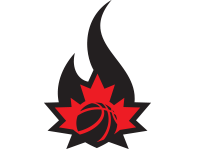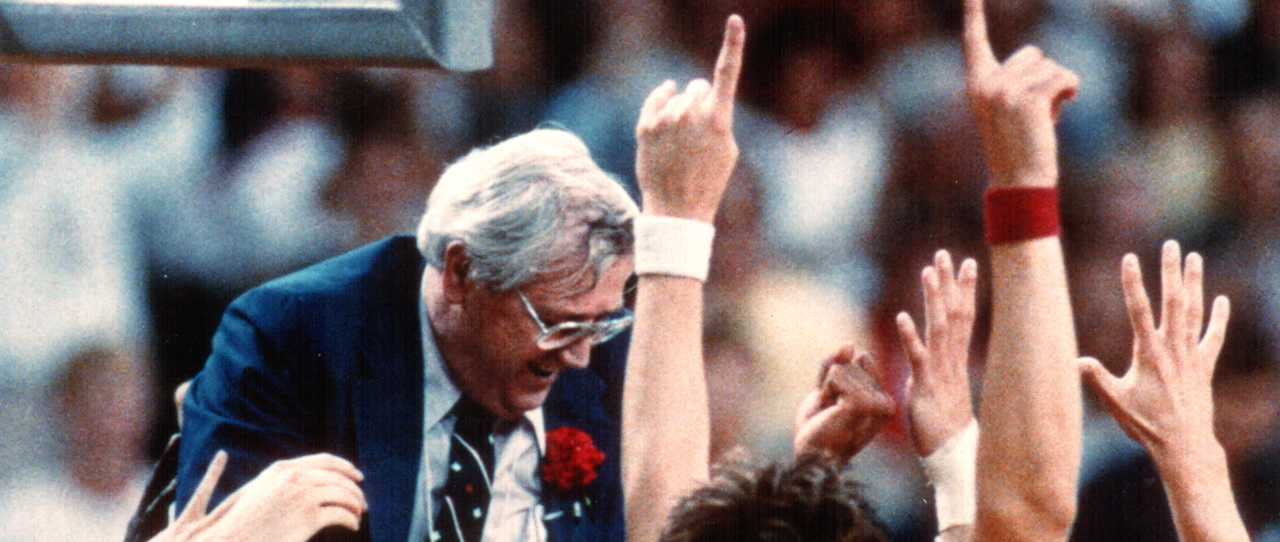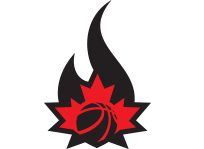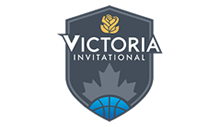Dr. James Naismith

On 24 Jul 2011, a heroic-sized statue of Dr. James Naismith, the inventor of basketball and native son of Ramsay township, ON, was unveiled in Centennial Square in downtown Almonte.
Born in Ramsay Township (in Lanark County in Eastern Ontario, just west of the City of Ottawa) on 6 Nov 1861, James was the eldest son of Scottish immigrants John and Margaret Naismith. In 1869, the family moved to Grand Calumet where his father began work as a saw hand. He was orphaned at age nine, when his parents contracted typhoid fever while working in the milling community. When their grandmother died in 1872, the Naismith children, Annie, James and Robbie, were left under the care of their uncle, Peter Young, back in Ramsay. James attended the one-room schoolhouse in Bennies’ Corners. He was known in the neighbourhood as a strong and skillful boy, but at school his monthly report cards showed poor grades. Although not the head of his class in academics, he was a leader among his peers in all physical activities and showed signs of becoming a fine athlete. James attended high school in Almonte, ON.
Despite the burden of farm duties, there was also time for play. In Bennies’ Corners, the local blacksmith shop was the gathering spot for the children. Here they enjoyed watching the blacksmith work his materials and playing in the sugarbush behind the shop. Where a tree or boulder served as a convenient base, they played variations of tag and hide-and-seek or tried their skill at Duck on the Rock – a game which combined throwing with tag using a large base stone to be guarded by the one player. This stone sat in the blacksmith’s yard adjacent to the Bennies’ Corners school. Players formed a line from a distance of 15-20 feet from the base stone. Each player used a fist-sized stone. The object was to dislodge the “guards” stone from the top of the base stone, by throwing and taking turns.
After graduating from Almonte High School, he attended McGill University. Jim headed for McGill’s gymnasium where he soon began participating in the gymnastic and rugby program. By his junior year, he was winning the university’s highest honours for his athletic involvement. Jim had time for extracurricular interests, joining the student government and Literary Society for which he debated. In 1887, he was cited on the Prize and Honour List for having passed the Bachelor of Arts in Honours in philosophy and Hebrew. He graduated as one of the top ten in his class on 30 Apr 1887. After graduation, Jim enrolled in the largest theological school affiliated with McGill University, the Presbyterian College. To finance his education, he accepted an appointment as instructor of physical education in the gymnasium at McGill. Although James won theological scholarships, he dismayed colleagues and professors by continuing his involvement in athletics. Naismith learned of the YMCA International Training School in Springfield, MA, for the education of laymen-leaders of youth. Shortly thereafter, in the summer of 1890, Jim left the Presbyterian College as an non-ordained minister to pursue a career with an emphasis on physical education. Remembering Duck on a Rock and how successful the lobbed arcing shot proved, Naismith incorporated a set of rules for throwing a soccer ball aimed at two peach baskets, thus creating a new game of his design called “Basket Ball”. That was in 1891. Within a few years, this game caught on and was soon being played at other institutions.
Naismith then embarked on a career in Physical Education through the YMCA, but took time out to earn his Medical Degree in 1989 while operating the Denver YMCA. This led him to accept the positions of Physical Education Director, Campus Chaplain and Basketball Coach at the University of Kansas. He remained there from 1898 until his retirement in 1938. He served twice in military conflict, including WWI in France. From time to time, Naismith returned to visit the area of his boyhood in Ramsay and Almonte, and maintained a long friendship with another famous “Ramsay son”, Tait McKenzie. Naismith saw his gift of basketball admitted as an official sport at the 1936 Berlin Olympics, which he felt was the highlight of his long career.
He died in Lawrence, KS, from heart trouble on 29 Nov 1939.
This article is taken from The Souvenir Program of the North Lanark Highland Games, Almonte, ON, 20 Aug 2011

‘Dr. James Naismith’: The original rules of basketball:
On January 15, 1892 in Springfield, Massachusetts, the International Young Men’s Christian Association Training School (now Springfield College) newspaper The Triangle published the rules for a brand new game invented by physical education professor James Naismith. Naismith called it Basket Ball, which originally involved attaching a peach basket to a suspended board.

Dr. James Naismith’s Original 13 Rules of Basket Ball
1. The ball may be thrown in any direction with one or both hands.
2. The ball may be batted in any direction with one or both hands (never with the fist).
3. A player cannot run with the ball. The player must throw it from the spot on which he catches it, allowance to be made for a man who catches the ball when running at a good speed if he tries to stop.
4. The ball must be held in or between the hands; the arms or body must not be used for holding it.
5. No shouldering, holding, pushing, tripping, or striking in any way the person of an opponent shall be allowed; the first infringement of this rule by any player shall count as a foul, the second shall disqualify him until the next goal is made, or, if there was evident intent to injure the person, for the whole of the game, no substitute allowed.
6. A foul is striking at the ball with the fist, violation of Rules 3,4, and such as described in Rule 5.
7. If either side makes three consecutive fouls, it shall count a goal for the opponents (consecutive means without the opponents in the mean time making a foul).
8. A goal shall be made when the ball is thrown or batted from the grounds into the basket and stays there, providing those defending the goal do not touch or disturb the goal. If the ball rests on the edges, and the opponent moves the basket, it shall count as a goal.
9. When the ball goes out of bounds, it shall be thrown into the field of play by the person first touching it. In case of a dispute, the umpire shall throw it straight into the field. The thrower-in is allowed five seconds; if he holds it longer, it shall go to the opponent. If any side persists in delaying the game, the umpire shall call a foul on that side.
10. The umpire shall be judge of the men and shall note the fouls and notify the referee when three consecutive fouls have been made. He shall have power to disqualify men according to Rule 5.
11. The referee shall be judge of the ball and shall decide when the ball is in play, in bounds, to which side it belongs, and shall keep the time. He shall decide when a goal has been made, and keep account of the goals with any other duties that are usually performed by a referee.
12. The time shall be two 15-minute halves, with five minutes’ rest between.
13. The side making the most goals in that time shall be declared the winner. In case of a draw, the game may, by agreement of the captains, be continued until another goal is made.
Tags: 13 Rules of Basket Ball, Dr. James Naismith, Springfield College
Posted in Czar Trivia
The Naismith Basketball Foundation















